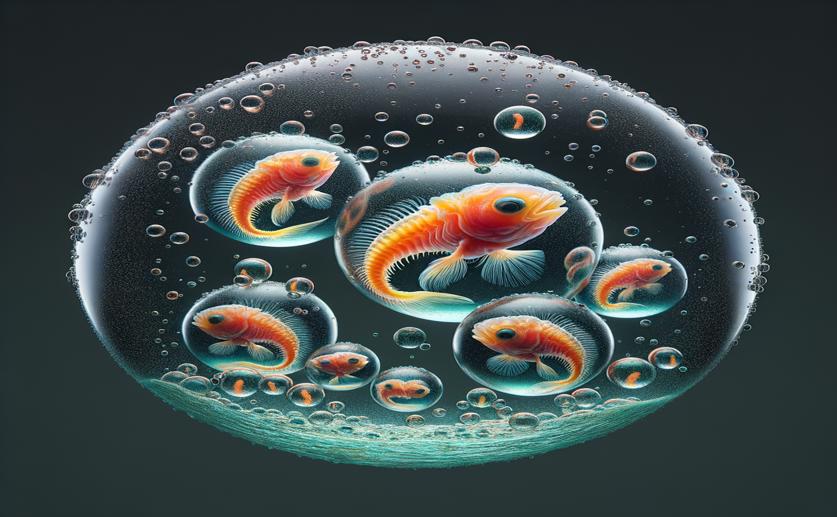
How Oil Drops in Fish Embryos Impact Their Survival
Jim Crocker
24th March, 2024

Image Source: Natural Science News, 2024
Key Findings
- In European hake, proper attachment of an oil layer to an oil droplet in eggs is crucial for embryo survival
- Eggs that float well have a higher chance of this essential oil layer attachment
- Egg buoyancy, and thus survival, is affected by changing ocean conditions like currents and salinity
Animal ScienceMarine BiologyEvolution
References
Main Study
1) The embryo-oil drop assembly: the timing and morphology of a critical event for fish early-life history survival.
Published 22nd March, 2024
https://doi.org/10.1038/s41598-024-57429-9
Related Studies
2) The influence of cascade hydropower development on the hydrodynamic conditions impacting the reproductive process of fish with semi-buoyant eggs.
3) Transgenerational plasticity of reproduction depends on rate of warming across generations.
Journal: Evolutionary applications, Issue: Vol 9, Issue 9, Oct 2016
4) Experimental parameterisation of principal physics in buoyancy variations of marine teleost eggs.
5) Water balance in developing eggs of the codGadus morhua L.



 11th March, 2024 | Greg Howard
11th March, 2024 | Greg Howard